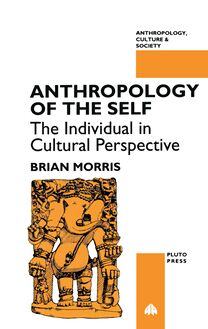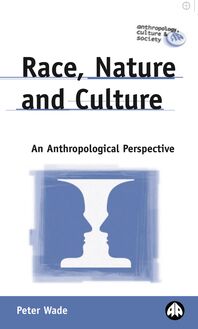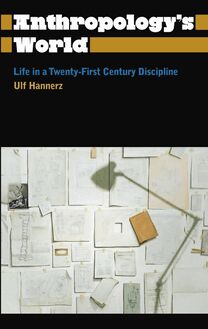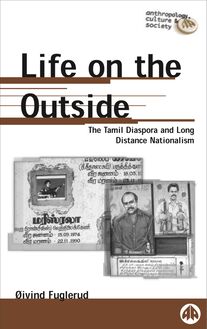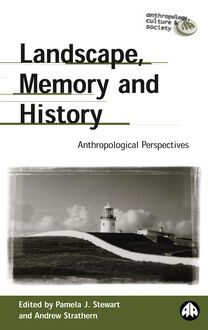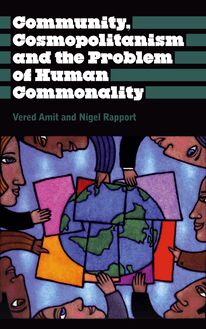-
 Univers
Univers
-
 Ebooks
Ebooks
-
 Livres audio
Livres audio
-
 Presse
Presse
-
 Podcasts
Podcasts
-
 BD
BD
-
 Documents
Documents
-
- Cours
- Révisions
- Ressources pédagogiques
- Sciences de l’éducation
- Manuels scolaires
- Langues
- Travaux de classe
- Annales de BEP
- Etudes supérieures
- Maternelle et primaire
- Fiches de lecture
- Orientation scolaire
- Méthodologie
- Corrigés de devoir
- Annales d’examens et concours
- Annales du bac
- Annales du brevet
- Rapports de stage
La lecture à portée de main
Vous pourrez modifier la taille du texte de cet ouvrage
Découvre YouScribe en t'inscrivant gratuitement
Je m'inscrisDécouvre YouScribe en t'inscrivant gratuitement
Je m'inscrisEn savoir plus
Vous pourrez modifier la taille du texte de cet ouvrage
En savoir plus

Description
Contributors from North America, Australia, New Zealand, Taiwan, and Europe explore a wide variety of case studies that includes seascapes in Jamaica; the Solomon Islands; the forests of Madagascar; Aboriginal and European notions of landscape in Australia; place and identity in 19th century maps and the bogs of Ireland; contemporary concerns over changing landscapes in Papua New Guinea; and representations of landscape and history in the poetry of the Scottish Borders.
1. Introduction by Pamela J. Stewart and Andrew Strathern
2. Iconic Images: Landscape and History in the Local Poetry of the Scottish Borders by John Gray
3. Ceide Fields: Natural Histories of a Buried Landscape by Stuart McLean
4. Landscape Representations: Place and Identity in the Nineteenth Century Ordnance Survey Maps of Ireland by Angele Smith
5. Memories of Ancestry in the Forests of Madagascar by Janice Harper
6. Moon Shadows: Aboriginal and European Heroes in an Australian Landscape by Veronica Strang
7. History, Mobility and Land Use Interests of Aborigines and Farmers in the
East Kimberly in North-West Australia by Ruth Lane
8. Co-present Landscapes: Routes and Rootedness as Sources of Identity in
Highlands New Guinea by Michael O'Hanlon and Linda Frankland
9. Island Builders: Landscape and Historicity among the Langalanga, Solomon Islands by Pei-yi Guo
10. Biography, Ecology, Political Economy: Seascape and Conflict in Jamaica by James G. Carrier
Epilogue by Andrew Strathern and Pamela J. Stewart
Sujets
Informations
| Publié par | Pluto Press |
| Date de parution | 20 mai 2003 |
| Nombre de lectures | 0 |
| EAN13 | 9781783715312 |
| Langue | English |
Informations légales : prix de location à la page 0,1850€. Cette information est donnée uniquement à titre indicatif conformément à la législation en vigueur.
Extrait
Anthropology, Culture and Society
Series Editors:
Professor Thomas Hylland Eriksen, University of Oslo
Dr Katy Gardner, University of Sussex
Dr Jon P. Mitchell, University of Sussex
RECENT TITLES
Land, Law and Environment: Mythical Land, Legal Boundaries Edited by A LLEN A BRAMSON AND D IMITRIOS T HEODOSSOPOULOS
The Trouble with Community: Anthropological Reflections on Movement, Identity and Collectivity V ARED A MIT AND N IGEL R APPORT
Anthropology and the Will to Meaning: A Postcolonial Critique V ASSOS A RGYROU
The War of Dreams: Exercises in Ethno-Fiction M ARC A UGÉ
Orange Parades: The Politics of Ritual, Tradition and Control D OMINIC B RYAN
Identity and Affect: Experiences of Identity in a Globalising World Edited by J OHN R. C AMPBELL AND A LAN R EW
Risk Revisited Edited by P AT C APLAN
Macedonia: The Politics of Identity and Difference Edited by J ANE K. C OWAN
Ethnicity and Nationalism: Anthropological Perspectives T HOMAS H YLLAND E RIKSEN
A History of Anthropology T HOMAS H YLLAND E RIKSEN AND F INN S IVERT N IELSON
Small Places, Large Issues: An Introduction to Social and Cultural Anthropology T HOMAS H YLLAND E RIKSEN
Life on the Outside: The Tamil Diaspora and Long-Distance Nationalism Ø IVIND F UGLERUD
Anthropology, Development and the Post-modern Challenge K ATY G ARDNER AND D AVID L EWIS
Power and its Disguises: Anthropological Perspectives on Power J OHN G LEDHILL
Youth and the State in Hungary: Capitalism, Communism and Class L ÁSZLÓ K ÜRTI
Locating Cultural Creativity Edited by J OHN L IEP
Cord of Blood: Possession and the Making of Voodoo N ADIA L OVELL
Ethnography and Prostitution in Peru L ORRAINE N ENCEL
Witchcraft, Power and Politics: Exploring the Occult in the South African Lowveld I SAK A. N IEHAUS with E LIAZAAR M OHLALA
AND K ALLY S HOKANE
Power, Community and the State: The Political Anthropology of Organisation in Mexico M ONIQUE N UIJTEN
Social Mobility in Kerala: Modernity and Identity in Conflict F ILIPPO O SELLA AND C AROLINE O SELLA
Negotiating Local Knowledge: Power and Identity in Development Edited by J OHAN P OTTIER , A LAN B ICKER AND P AUL S ILLITOE
Class, Nation and Identity: The Anthropology of Political Movements J EFF P RATT
Bearing Witness F IONA C. R OSS
Race, Nation and Culture: An Anthropological Perspective P ETER W ADE
LANDSCAPE, MEMORY AND HISTORY
Anthropological Perspectives
E DITED BY
P AMELA J. S TEWART AND A NDREW S TRATHERN
First published 2003 by PLUTO PRESS 345 Archway Road, London N6 5AA and 22883 Quicksilver Drive, Sterling, VA 20166–2012, USA
www.plutobooks.com
Copyright © Pamela J. Stewart and Andrew Strathern 2003
The right of the individual contributors to be identified as the authors of this work has been asserted by them in accordance with the Copyright, Designs and Patents Act 1988.
British Library Cataloguing in Publication Data A catalogue record for this book is available from the British Library
ISBN 0 7453 1967 X hardback ISBN 0 7453 1966 1 paperback ISBN 9 7817 8371 5312 ePub ISBN 9 7817 8371 5329 Mobi
Library of Congress Cataloging in Publication Data applied for
10 9 8 7 6 5 4 3 2 1
Designed and produced for Pluto Press by Chase Publishing Services, Fortescue, Sidmouth EX10 9QG, England Typeset from disk by Stanford DTP Services, Towcester, England Printed and bound in the European Union by Antony Rowe, Chippenham and Eastbourne, England
CONTENTS 1 . Introduction Pamela J. Stewart and Andrew Strathern 2 . Iconic Images: Landscape and History in the Local Poetry of the Scottish Borders John Gray 3 . Céide Fields: Natural Histories of a Buried Landscape Stuart McLean 4 . Landscape Representation: Place and Identity in Nineteenth-century Ordnance Survey Maps of Ireland Angèle Smith 5 . Memories of Ancestry in the Forests of Madagascar Janice Harper 6 . Moon Shadows: Aboriginal and European Heroes in an Australian Landscape Veronica Strang 7 . History, Mobility and Land Use Interests of Aborigines and Farmers in the East Kimberly in North-West Australia Ruth Lane 8 . Co-present Landscapes: Routes and Rootedness as Sources of Identity in Highlands New Guinea Michael O’Hanlon and Linda Frankland 9 . ‘Island Builders’: Landscape and Historicity Among the Langalanga, Solomon Islands Pei-yi Guo 10 . Biography, Ecology, Political Economy: Seascape and Conflict in Jamaica James G. Carrier Epilogue Andrew Strathern and Pamela J. Stewart Notes on Contributors Index
LIST OF FIGURES 6.1a Distant view of Jimmy Inkerman’s memorial at Trubanamen 6.1b Close-up view of memorial 6.2 The Australian Stockman’s Hall of Fame in Longreach, North Queensland 7.1 Ord River Valley looking north from Kununurra 7.2 Proposed Ord Stage 2 Project Area showing Conservation Area and Aboriginal land claims 7.3 The East Kimberley Region 7.4 John Mack, horticulturalist 7.5 Bush meeting of Miriuwung women convened by the Northern Land Council to discuss the Ord Stage 2 proposal 8.1 Standing atop the bolyim house, men of Komblo Kulka clan consume pork fat at the climax to their Pig Festival 8.2 Walking home with a netbag of sweet potato, a Wahgi woman passes by the roadside the decaying hulk of a truck, parked at its owner’s settlement, adjacent to a grave
1
INTRODUCTION
Pamela J. Stewart and Andrew Strathern
The topic of landscape has recently come more to the fore in anthropological interests. Ethnographers have realised from their field experiences how perceptions of and values attached to landscape encode values and fix memories to places that become sites of historical identity. Such perceptions shift, either gradually or dramatically, over time, so that landscape becomes a form of codification of history itself, seen from the viewpoints of personal expression and experience. This notion has proved particularly fruitful as a focus for work in parts of the world where social and cultural anthropology have had to make their way alongside history, sociology and politics. At the same time the concept of landscape has proved strategic for interpreting materials from many parts of the world.
In this collection of papers we highlight the significance of this topic for studies of identity. Thus, the materials here look at particular individuals, emplaced within a physical environment, who interact with others within their social environment through their remembered and imaginary experiences. These expressions of identity are not reified or locked in time but are historically positioned in the dynamics of temporal space. The generalised applicability of this approach is evident from the range of geographical locations included in this volume: Scotland, Ireland, Madagascar, Papua New Guinea, Australia, the Solomon Islands and Jamaica. One of the common tropes of ethnographic enquiry has always been that of ‘setting’. The beginning chapters of most ethnographic treatises lay out the place in which the research was conducted and the temporal location of the study. But one of the criticisms of some ethnographic studies has been a lack of historicity in representation and of details on the intersubjectivity of the peoples being discussed. The authors here use history and memory to explore the economic, political and social events that impact perceived visions of landscape and the perceived placement of people within these settings.
In terms of identity, our view is that two crucial elements are at work: notions of memory and notions of place . Together these occupy a conceptual space analogous to that which community once held in the social anthropology of some societies. Memory and place, via landscape (including seascape), can be seen as crucial transducers whereby the local, national and global are brought into mutual alignment; or as providing sites where conflicts between these influences are played out. Such a theoretical scheme can also be seen as providing an alternative way of studying identity to the concentration on nationalism and national senses of identity as phenomena per se . It can help to re-establish a sphere of studies for social anthropology that would integrate aspects of earlier community-based approaches with approaches that emphasise political change, citizenship, national identity, historical influences, and similar broad factors.
Landscapes are also dramatically changed from time to time not only by urban planning, roads and factories but also by the wide-scale epidemics that affect farming, such as the spread of foot and mouth disease in the UK and elsewhere. These epidemiological disasters pose a challenge to understanding the experience of farmers and others who value the countryside in different ways (e.g. tourists who often come to rural farming areas in places like Scotland simply to see the farming landscape with its varied hues, odours, livestock and topography). The project that we pursue here should help to bring out a better understanding of the intertwining aspects of landscape, memory and history in ethnographic presentation and make readers in general aware of its significance.
The materials presented here explore the topic of landscape, memory and history in greater depth and in a broader geographical range than has previously been done. A strong emphasis on changing perceptions of history as expressed in ideas about landscape is central to this project, taking landscape in the broad senses laid out in the volumes edited by Hirsch and O’Hanlon (1995), Bender (1993), and Bender and Winer (2001). This involves the examination of landscape as seen initially by the viewer and ‘a second landscape which is produced through local practice and which we come to recognise and understand through fieldwork and through ethnographic description and interpretation’ (Hirsch 1995: 2).
The word ‘landscape’ was introduced into English as a technical term of painters (cf. Oxford Eng
-
 Univers
Univers
-
 Ebooks
Ebooks
-
 Livres audio
Livres audio
-
 Presse
Presse
-
 Podcasts
Podcasts
-
 BD
BD
-
 Documents
Documents
-
Jeunesse
-
Littérature
-
Ressources professionnelles
-
Santé et bien-être
-
Savoirs
-
Education
-
Loisirs et hobbies
-
Art, musique et cinéma
-
Actualité et débat de société
-
Jeunesse
-
Littérature
-
Ressources professionnelles
-
Santé et bien-être
-
Savoirs
-
Education
-
Loisirs et hobbies
-
Art, musique et cinéma
-
Actualité et débat de société
-
Actualités
-
Lifestyle
-
Presse jeunesse
-
Presse professionnelle
-
Pratique
-
Presse sportive
-
Presse internationale
-
Culture & Médias
-
Action et Aventures
-
Science-fiction et Fantasy
-
Société
-
Jeunesse
-
Littérature
-
Ressources professionnelles
-
Santé et bien-être
-
Savoirs
-
Education
-
Loisirs et hobbies
-
Art, musique et cinéma
-
Actualité et débat de société
- Cours
- Révisions
- Ressources pédagogiques
- Sciences de l’éducation
- Manuels scolaires
- Langues
- Travaux de classe
- Annales de BEP
- Etudes supérieures
- Maternelle et primaire
- Fiches de lecture
- Orientation scolaire
- Méthodologie
- Corrigés de devoir
- Annales d’examens et concours
- Annales du bac
- Annales du brevet
- Rapports de stage
